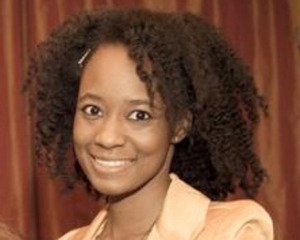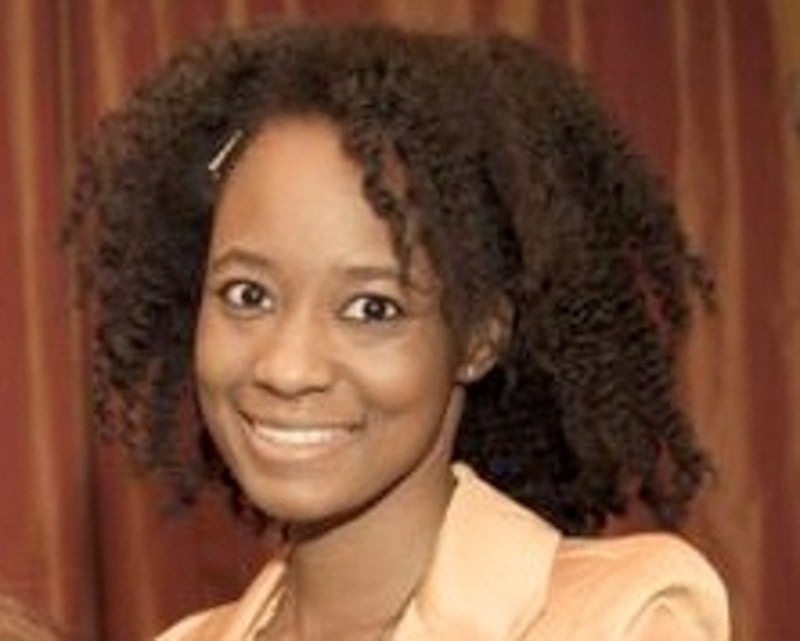Stanford’s admission rate for transfer students is even lower than it is for the regular class, coming in at just 2 percent. Only 33 transfer students were admitted for the fall of 2014.
As part of our “Transfer Profile” series, The Daily interviewed Britiny Cook ’17, who transferred from Harold Washington College (HWC) in Chicago after two years of studying there.

(Courtesy of Britiny Cook)
The Stanford Daily (TSD): How do you look back at that experience now that you’re at Stanford? What do you miss? What are you grateful for that’s different about Stanford?
Britiny Cook (BC): I look back at my time at HWC very fondly. I am lucky enough to have had excellent professors. They were highly educated, very committed to teaching community college, engaged, passionate about their fields and always available. I was never in a class that had more than about 18 students, so the large lectures that are common here at Stanford are taking some getting used to.
Other than that, I love everything about Stanford. One thing I really appreciate about Stanford is the strong sense of community. In Chicago, school and home were quite separate, but at Stanford they’re one. As a result, I feel a lot closer with the friends I’ve made here, and more integrated into academic and social life than I did at my last school.
TSD: How has Stanford surprised you?
BC: I’ve been most surprised by how happy everyone seems to be that the transfers are here. I had heard that Stanford wasn’t the typical elite school when it comes to competitiveness among students, but I have been blown away by the sense of camaraderie that is prevalent on campus. Everyone seems — almost eerily — nice and eager to help, and my classmates are cooperative and interested instead of combative and self-serving. This factor has contributed the most to my feeling at ease here, and it has definitely aided my transition.
TSD: Describe what it’s like to be a transfer student. Have you found the transfer community to be welcoming and strong? Have you found the Stanford community as a whole to be welcoming?
BC: There is a strong sense of community among transfer students that extends beyond the current incoming class. The 2014 transfers were welcomed by a screaming crowd of the transfers from 2013 and before, and since then we have become a rather tight-knit group. Because there are so few of us, it’s easy to spend time getting to know one another. I also appreciate that even though some of us might be closer to certain members of our community than to others, we all feel like we can depend on one another.
I was shocked by the amount of effort Stanford put into making the transfers feel welcome during NSO. I have friends that transferred to similar schools and were left to their own devices when they arrived on campus, but Stanford went out of its way to make sure that we didn’t fall through the cracks. There were many events that paid attention to issues specific to transfers such as credit evaluation and degree completion time. We were respected as young adults with life experiences that were unique from the class of 2018.
TSD: What advice would you give to future transfer students?
BC: I would advise future transfer students not to hold back. We come in with the same aspirations as anyone else at Stanford, but it is easy to feel like we have to limit ourselves because we’ve arrived later. Stanford made it clear to us early on that we have just as much right as any other student [to] complete the degree we set out to. I want future transfers to know that it’s okay to go at a reasonable pace to finish the degree you truly want, instead of choosing the degree that will get you out of here the fastest. Be focused and deliberate, but be easy about this as well; no one is keeping score.
And don’t get too dependent on the transfer community. It can feel like we are a bubble within the Stanford bubble. This is perfectly okay, and actually quite comforting, but it’s also important to realize that you are a Stanford student first, and a transfer second. I love that my fellow transfers are getting out there and joining organizations and clubs, running for student office, doing research, and participating in any other activities that the typical Stanford student would. The transfer community can remain your home base, but get out there and find your niche within [the] wider Stanford community.
TSD: What makes your Stanford experience unique as a transfer? Did you come in with experiences most people here don’t have?
BC: I have the luxury of knowing exactly what I want to do here — so far, at least. I came to Stanford with several years of work experience. While this has imbued me with a certain set of skills that are useful in academics, it has also given me the opportunity to discover what I want to do, and what I hate doing. At 18, I never would have considered a career in education policy. I might have majored in history, and graduated having no idea what I wanted to do with myself. I still love history, but my work experience has helped me to separate hobby from my career, and steered me towards a discipline that will not just land me work, but work that I find truly satisfying. I do not think I would have had this insight if I had not taken a few detours on my way to Stanford.
I haven’t always had an interest in education. At least, my interest was not obvious to me until I came back to school. Before Stanford, I worked in project management and owned my own company. When I went back to school, I was set on perfecting my training and development skills, my favorite aspect of my previous work, and going into organizational psychology. However, once I reentered school, I had several professors that made a huge impact on me, and who made me think about the nature of education and how it sets the foundation for your entire life. Many of us believe we are the product of our childhoods, which is true, but we all spent the majority of our time during childhood in school. The same way the quality of your work and whether or not you enjoy your job affects your entire life, the quality of the school a child is in affects their life in an equally significant way. Many of our deepest convictions and views about the world are developed at school, and I think public education in America is doing students a great disservice. I’m going into education because I would like to see that change. Also, I did not originally think of the School of Education when applying to Stanford, but I’d be lying if I said it hasn’t been a pleasant surprise.
Contact Katie Kramon at ckramon ‘at’ stanford.edu.
